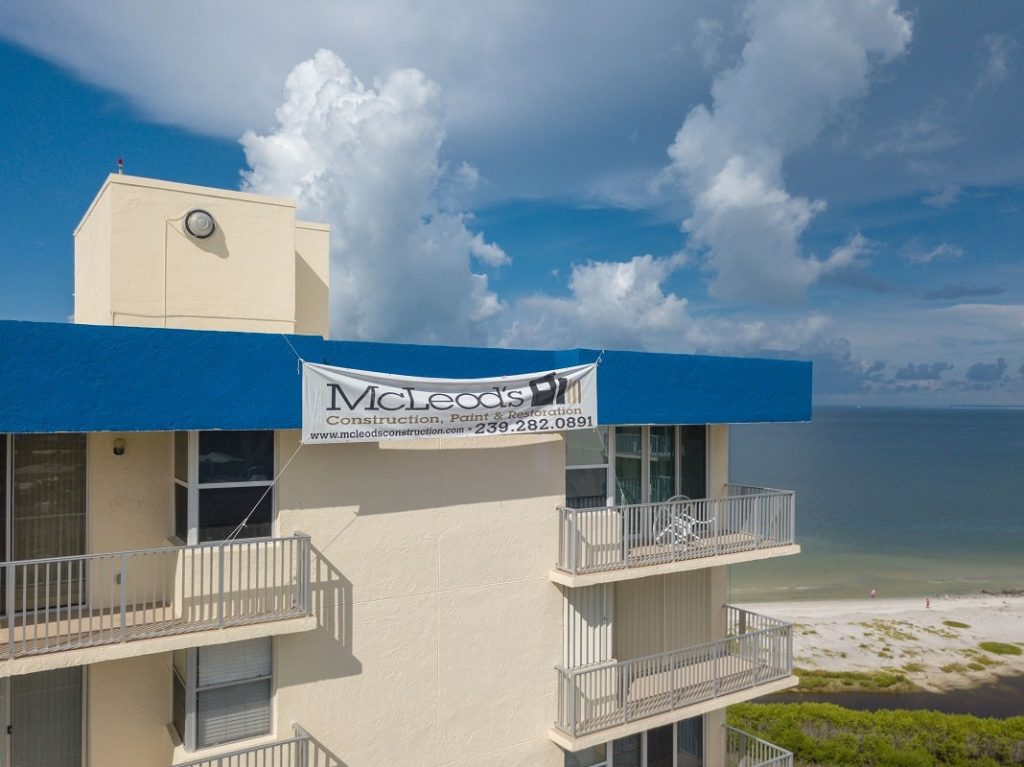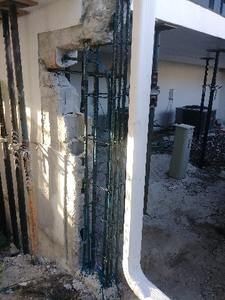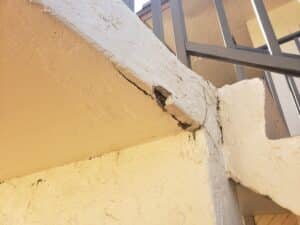Water damage can cause significant harm to Condo-HOA and commercial properties, leading to costly repairs and replacements. This is why implementing an effective waterproofing and sealant strategy can prevent water intrusion, mold, and mildew growth while enhancing durability and increasing property value.
McLeod’s Contracting Solutions is dedicated to guiding Condo-HOA and commercial property owners and managers in making well-informed decisions concerning their property maintenance and renovation needs. As certified and insured Florida General Contractors, we strive to provide informative and intent-driven content that encompasses various aspects of property upkeep, including waterproofing and sealants, concrete and stucco restoration, commercial high-rise painting, window and door replacement, and EFIS foam trim repairs.
This guide will focus on waterproofing and sealant solutions for Condo-HOA and commercial properties, offering insights into techniques, materials, and professional services available to protect your investment from water intrusion and damage. So, read on and understand how waterproofing and sealants work, including best practices, how-tos, checklists, FAQs, expert advice, trends, and comparisons. Let’s begin!
The Importance of Waterproofing and Sealants
Effective waterproofing and sealants are crucial components in maintaining your Condo-HOA and commercial properties, providing numerous benefits such as:
1. Protection Against Water Damage: Proper waterproofing and sealing form a protective barrier that prevents water intrusion, safeguarding your property’s structural integrity and preventing costly repair or replacement needs.
2. Mold and Mildew Prevention: Waterproofing and sealants minimize the moisture within your property, reducing the risk of mold and mildew growth, which can negatively impact occupants’ health.
3. Enhanced Durability: Waterproofing and sealant systems prolong the lifespan of your building materials by preventing deterioration caused by water damage and exposure to harsh weather elements.
4. Increased Property Value: A well-maintained property with effective waterproofing and sealing systems in place is more attractive to potential buyers or tenants, increasing your property’s market value.
Identifying Potential Water Intrusion Issues
Recognizing the signs of water intrusion and potential problem areas is a crucial first step in addressing and preventing water damage. Here are some common indications of water intrusion issues:
1. Visible stains or discoloration on walls, ceilings, or floors.
2. Peeling, blistering, or bubbling paint or wallpaper.
3. Mold or mildew odor or visible growth.
4. Damp or deteriorating baseboards, trim, or window sills.
5. Cracked, loose, or missing exterior caulking.
6. Water accumulation or pooling near the property’s foundation.
If you notice any of these signs, it’s essential to consult a professional waterproofing and sealant contractor for a thorough inspection and appropriate remediation.
Waterproofing and Sealant Materials
Various materials and products are available for waterproofing and sealing your Condo-HOA or commercial property, each with its specific advantages and limitations. Some popular waterproofing and sealant options include:
1. Liquid Membranes: Applied like paint, liquid membranes create a flexible, seamless, and durable waterproofing barrier suitable for a wide range of applications, including roofing and exterior walls.
2. Sheet Membranes: Comprising thin layers of waterproof materials bonded together, sheet membranes provide a robust and efficient waterproofing solution for foundation walls, horizontal surfaces, and subterranean structures.
3. Bituminous Coatings: Derived from petroleum or coal tar, bituminous coatings are commonly used to waterproof concrete foundations, protecting against water penetration and chemical damage.
4. Cementitious Waterproofing: A versatile waterproofing material that bonds well with concrete surfaces, cementitious waterproofing agents are typically used in basements, podium slabs, and swimming pools.
5. Silicone and Acrylic Sealants: These flexible and durable sealants provide excellent adhesion and water resistance for various interior and exterior applications, including window and door caulking, joints, and gaps.
Best Practices for Waterproofing and Sealants
For a successful and long-lasting waterproofing and sealant application, follow these best practices:
1. Proper Surface Preparation: Ensure surfaces are clean, dry, and free of debris before applying any waterproofing or sealant materials, as contaminants can compromise adhesion and effectiveness.
2. Manufacturer’s Instructions: Adhere to the specific instructions provided by the waterproofing and sealant product manufacturers, such as recommended application techniques, drying times, and curing conditions, to optimize performance.
3. Correct Product Selection: Choose waterproofing and sealant materials that are compatible with your property’s building materials and suited to the specific application requirements and environmental conditions.
4. Periodic Inspection and Maintenance: Regularly inspect your property for signs of water intrusion or sealant failure and address any issues promptly to prevent further damage.
Benefits of Hiring a Professional Waterproofing and Sealant Contractor
Entrusting your waterproofing and sealant project to a professional contractor offers several advantages:
1. Industry Expertise: Professional contractors possess the experience, knowledge, and tools necessary to advise on the best waterproofing and sealant solutions for your unique property needs and ensure proper application.
2. Quality Workmanship: Skilled contractors deliver high-quality workmanship that guarantees your waterproofing and sealant systems will provide optimal performance and protection.
3. Compliance with Building Codes: Hiring a professional contractor ensures your waterproofing and sealant project adheres to local building codes and manufacturing specifications for added safety and reliability.
4. Time and Cost Efficiency: A professional contractor can streamline the waterproofing and sealant process, saving you time, effort, and potentially costly mistakes.
Conclusion
Implementing a comprehensive waterproofing and sealant strategy is essential for preserving the structural integrity and value of your Condo-HOA and commercial properties in Florida. By understanding the importance of protection against water intrusion, identifying potential water damage, selecting materials, and partnering with a professional contractor, you can confidently maintain your property in its optimal condition.
Trust McLeod’s Contracting Solutions for all your waterproofing and sealant needs. As one of the leading painting and waterproofing contractors in Naples, our certified professionals specialize in protecting Condo-HOA and commercial properties from water damage, using innovative products and techniques designed to provide lasting solutions. Schedule your free consultation today and experience the peace of mind we can offer to safeguard your property and investment.







